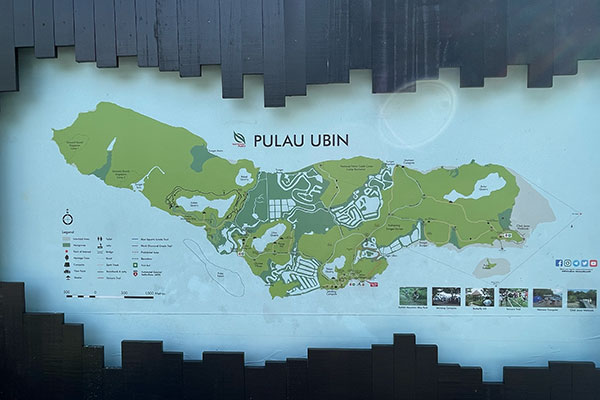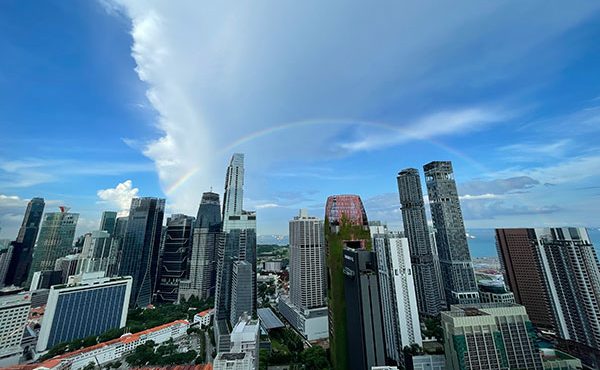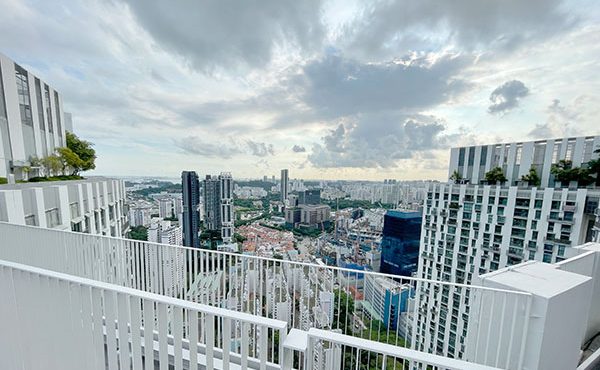
Pulau Ubin, a small island northeast of mainland Singapore, serves as both a geographical and symbolic edge to the city-state’s narrative of modernity. Unlike the meticulously planned urban core, Ubin presents a landscape where spontaneity, tradition, and nature coexist in ways that defy the structured order of mainland development. Covering about 10 square kilometres, the island is accessible only by bumboat from Changi Point Ferry Terminal, making it a deliberate detour from the city’s dense and efficient infrastructure.
Historically, Pulau Ubin was a site of economic production. It once supported thriving granite quarries, fisheries, and small-scale agriculture. The kampongs—traditional Malay villages—on the island were home to a mix of Chinese and Malay families who lived in attap houses, drew water from wells, and maintained livelihoods largely decoupled from the mainland’s industrial economy. One particularly significant kampong is Kampong Sungei Durian, the last surviving Malay kampong in Singapore. Once home to 47 houses, only 12 remain today, and residents often split their time between Ubin and the mainland.
Though vibrant in its heyday—with a local school, mosque, and cafés—the kampong now bears quieter traces of community life, including an old sepak takraw court and preserved stilt houses known as rumah panggung. Residents live under Temporary Occupation Licences (TOLs) (TOLs) that must be renewed periodically, underscoring the tentative nature of their occupancy.
These homes, with their elevated architecture and culturally significant spatial arrangements, serve as living archives of Malay kampong heritage. Their continued use, maintained by ageing residents and their descendants, anchors Pulau Ubin’s memory in tangible form, even as broader transformations reshape the island. The ageing residents of Ubin’s kampongs are more than heritage figures; they are, in Khoo’s terms, “bio-spatial anchors”—living records whose presence reclaims space as affective terrain. Their continued habitation resists the idea that heritage can be reduced to something static or staged purely for visitors; instead, it remains part of everyday life.
In recent decades, Pulau Ubin has been reframed as a site for eco-tourism and heritage preservation. Managed by the National Parks Board (NParks), the island is now promoted as an ecological and cultural sanctuary. Interpretive trails, birdwatching huts, restored boardwalks, and signage encourage visitors to appreciate its biodiversity and traditional kampong life. Ubin’s transformation into an educational and recreational destination has been widely praised for preserving green space and offering urban residents a chance to connect with a slower, more grounded way of life.
Pulau Ubin occupies a paradoxical position within Singapore’s evolving identity as a “City in Nature.” Unlike the skyrise greenery and engineered ecological corridors of the mainland, Ubin’s ecology is uncurated and stubbornly biodiverse—a spontaneous wilderness preserved not through design, but through deferred transformation.
Yet this transformation also raises important cultural and political questions. Despite its protected status, Pulau Ubin remains vulnerable to development pressures. Proposals in the early 1990s included road connections to the mainland and coastal reclamation works at Chek Jawa—plans shelved only after public outcry. The language of conservation has since included phrases like “for as long as possible,” hinting at a provisional rather than permanent protection.
In Singapore’s hyper-planned context, ambiguity is rarely accidental. The “vulnerability” of Ubin—like that of other low-lying and liminal zones—is often less a technical constraint than a strategic openness, where futures are held in suspension, awaiting new developmental logics.
Community stewardship has played a vital role in shaping the island’s narrative. Projects like Wan’s Ubin Journal, led by descendants of island residents, highlight the everyday lives of the Orang Pulau and efforts to reclaim heritage spaces like Kampung Surau. These grassroots actions reflect a broader movement advocating for “human-centred conservation,” which views kampong life and local memory not as passive heritage to be curated, but as living elements requiring resident involvement and continuity.
During our field visit, our group was graciously toured around the settlements by Nor Syazwan bin Abdul Majid, the founder of Wan’s Ubin Journal, whose insights added invaluable layers to our understanding of Ubin’s lived heritage.
Conservation here is not neutral—it is curated. The planning logic at work is not absent from Ubin; it is subtler, performative rather than infrastructural. The spatial scripting of trails, signage, and curated viewpoints constructs a version of rural authenticity palatable to national identity and tourism. This echoes what Joanne Leow calls a “cartographic performance” that maps memory onto sanctioned terrain.
The island’s role as a heritage park means it is both protected and controlled—its narratives shaped by the state to serve pedagogical and ideological functions. While Pulau Ubin resists full commodification, it nonetheless fits within Singapore’s broader logic of designed memory and managed nostalgia. It is a space set apart to represent what no longer exists elsewhere.
Moreover, the preservation of kampong life on Ubin—while valuable—is not purely organic. The few remaining residents live under constraints, and the island’s infrastructure increasingly serves visitors rather than residents. In this context, Pulau Ubin functions as a carefully bounded exception that reinforces the rule. It enables the city to showcase rustic authenticity without disrupting its dominant developmental ethos.
This juxtaposition is crucial. Pulau Ubin is not beyond the reach of planning; it is embedded within a broader strategy that values ecological balance and cultural memory—but always on the state’s terms. The island tells a story of Singapore that is both inclusive and exclusive, celebratory and selective.
In understanding Pulau Ubin, we glimpse the margins where alternative histories are preserved—not to challenge the mainstream, but to bolster its legitimacy. It is a place of memory that reveals the politics of forgetting—a rural archive in a city that rarely looks back.
As we consider the role of heritage in shaping urban futures, Pulau Ubin offers a compelling counterpoint. It suggests that memory, like land, can be zoned and optimised—but also that it remains deeply affective, rooted in lived experience, and resistant, in subtle ways, to total control.
***
All pieces in The Singapore Chronicles:
- Part 1 – Introduction: The Paradoxical City
- Part 2 – Singapore’s Urban History in Four Acts
- Part 3 – The Politics of Preservation
- Part 4 – Housing the Nation
- Part 5 – Memory in the Margins
- Part 6 – Designing for Urban Health
- Part 7 – Conclusion
- Part 8 – Divergent Models: Singapore, Barcelona, Vancouver
***
Erick Villagomez is the Editor-in-Chief at Spacing Vancouver and teaches at UBC’s School of Community and Regional Planning. He is also the author of The Laws of Settlements: 54 Laws Underlying Settlements Across Scale and Culture.




